
Imagine turning your classroom into a green wonderland where plants grow and ideas bloom. Gardens help students learn by touching, smelling, and watching life grow.
Try vertical gardens, tiny plant boxes, or a sunny outdoor spot for lessons. Green spaces make learning fun and help friends work together.
Discover simple garden projects that bring nature indoors. Grow herbs, flowers, or vegetables in cups or walls.
These ideas spark creativity and teach teamwork. Start today and watch your classroom come alive with color and curiosity.

A vertical garden wall is an innovative way to bring nature into the classroom while maximizing limited space. This living wall can be created using wall-mounted planters, pockets, or trellises filled with various plants, herbs, or flowers. Not only does it enhance the aesthetic appeal of the learning environment, but it also provides students with hands-on gardening experience. Additionally, a vertical garden can be a great educational tool, promoting discussions on ecology, sustainability, and plant biology.
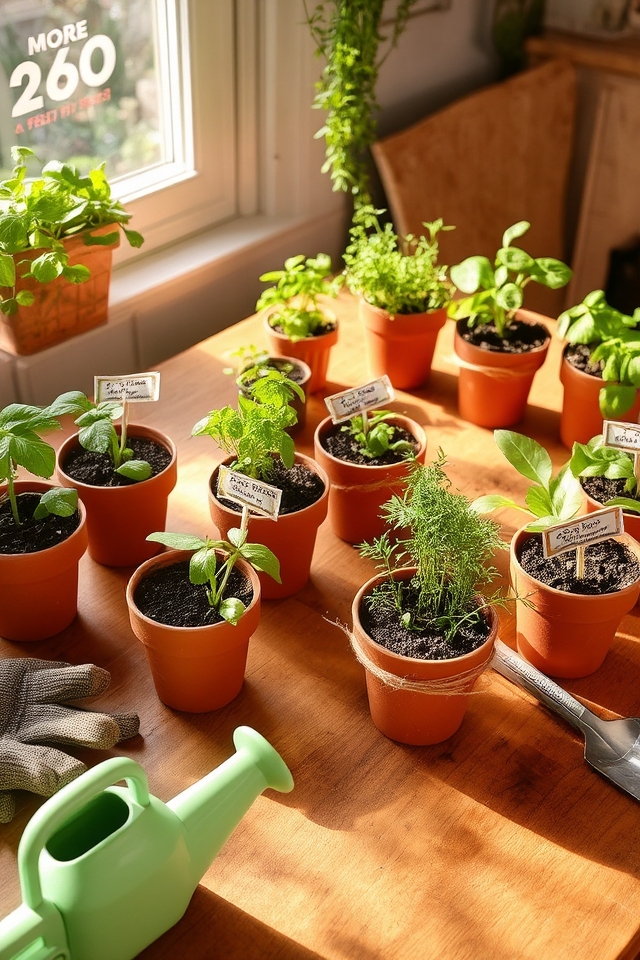
A mini herb garden is a fantastic addition to any classroom, providing a hands-on learning experience for students. By growing herbs like basil, parsley, and mint in small pots or a vertical garden setup, students can explore concepts in botany, ecology, and nutrition. This interactive project not only nurtures responsibility and teamwork but also stimulates the senses. Plus, the fresh herbs can be used in cooking lessons, further enhancing their educational value while fostering a love for gardening.
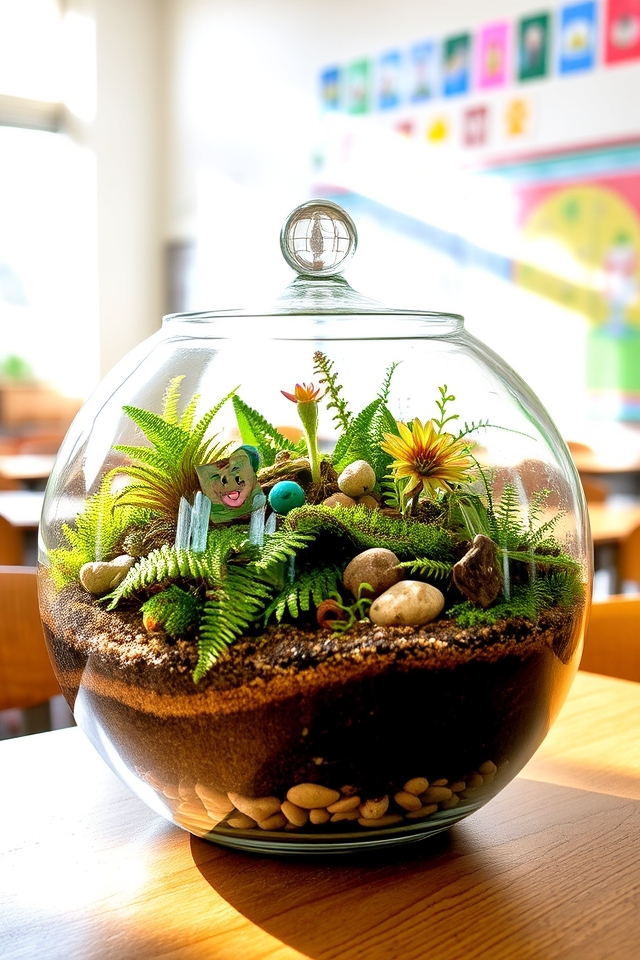
A classroom terrarium is a miniature garden encapsulated in glass, perfect for enhancing the learning environment. It allows students to explore ecosystems, plant biology, and the water cycle in a hands-on manner. By cultivating their own terrarium, students can observe how plants thrive in a contained environment, fostering responsibility and care. This creative gardening project also promotes teamwork, as students can collaborate on design and maintenance, making it an engaging addition to any classroom.
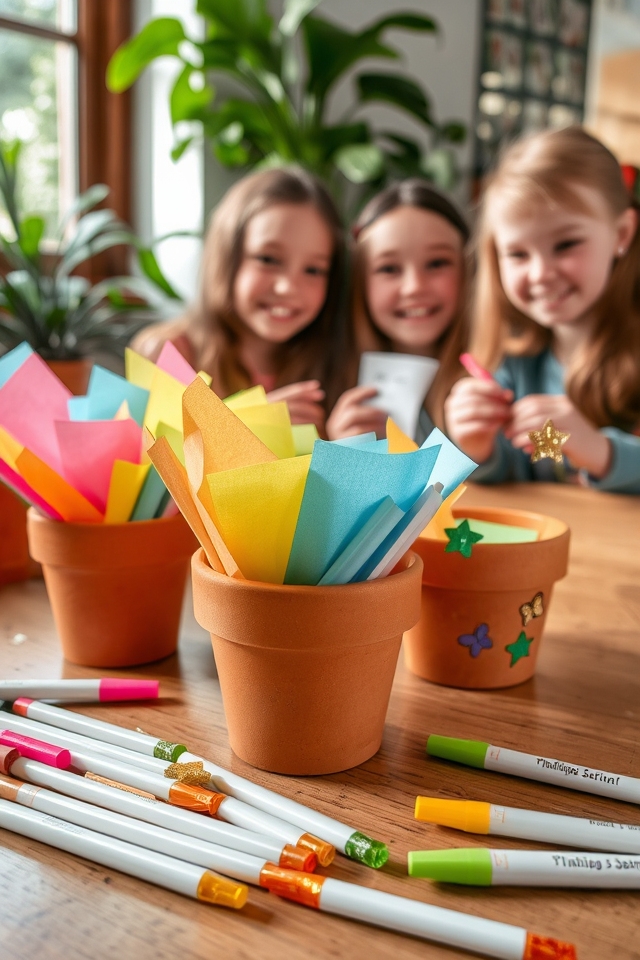
A Flower Pot Writing Station is a delightful way to encourage creativity and self-expression in the classroom. Set up small flower pots filled with colorful paper, markers, and stickers. Students can write poems, short stories, or letters on the paper and decorate their pots with their creations. Displaying their written works in the pots creates a vibrant and inviting environment, while also fostering a love for writing and nature. This interactive station not only enhances literacy skills but also encourages collaboration and imaginative play.
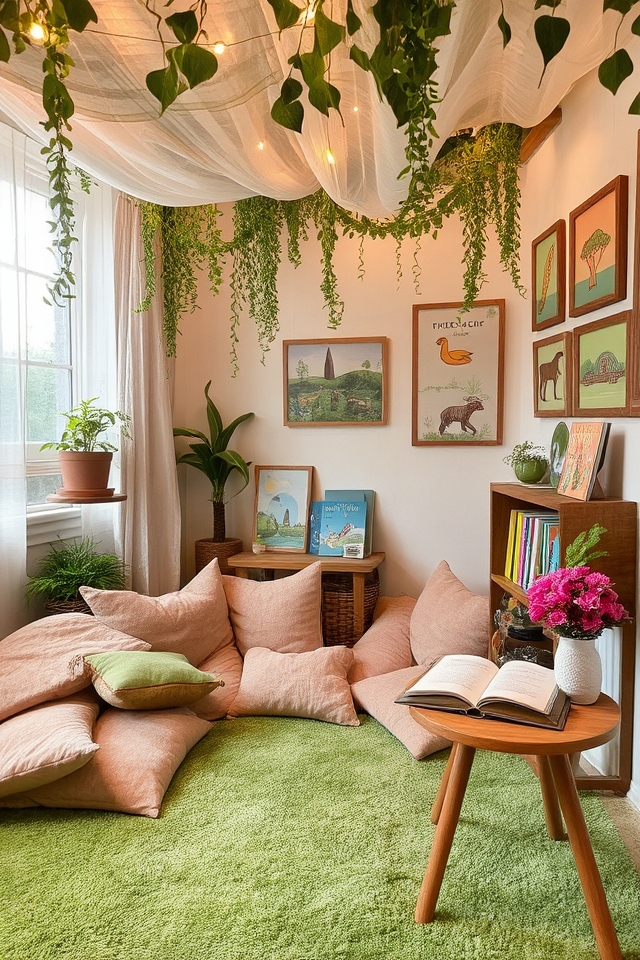
A nature-themed reading nook in the classroom offers a serene retreat for students to immerse themselves in books while surrounded by elements inspired by the outdoors. Design this cozy corner with comfortable cushions, soft lighting, and faux greenery to evoke a calming woodland atmosphere. Decorate with nature-themed artwork and include books about plants, animals, and the environment. This enchanting space will not only encourage reading but also foster a love for nature and creativity among students.
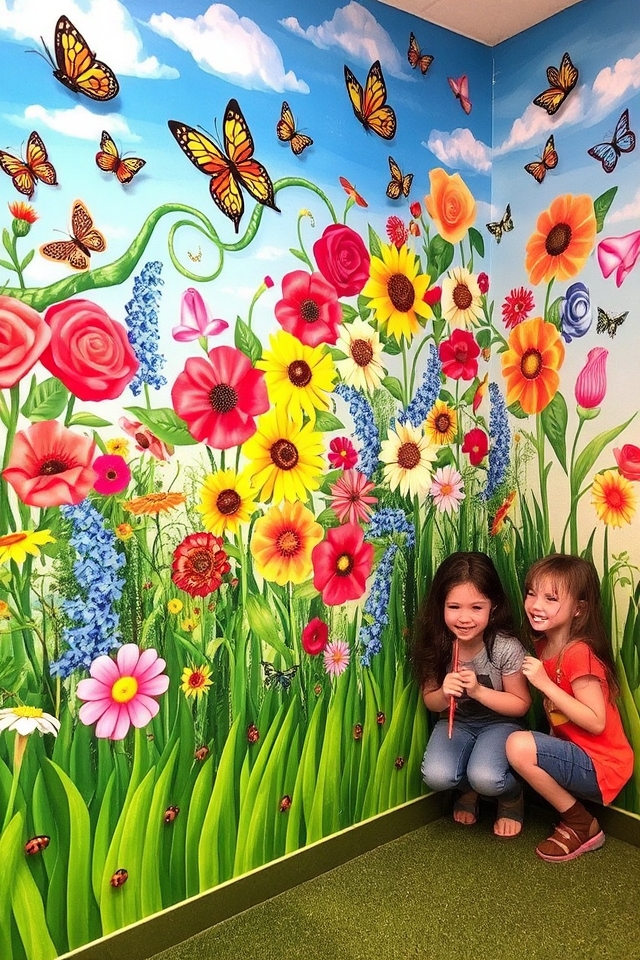
Garden mural art can transform a classroom into a vibrant, engaging learning environment. By featuring colorful flowers, plants, and wildlife, these murals can spark creativity and inspire students’ imaginations. Involving students in the mural creation process fosters teamwork and artistic expression, while also allowing them to connect with nature. This visually appealing artwork can serve as a calming backdrop for lessons, promoting a sense of tranquility and focus in the classroom.
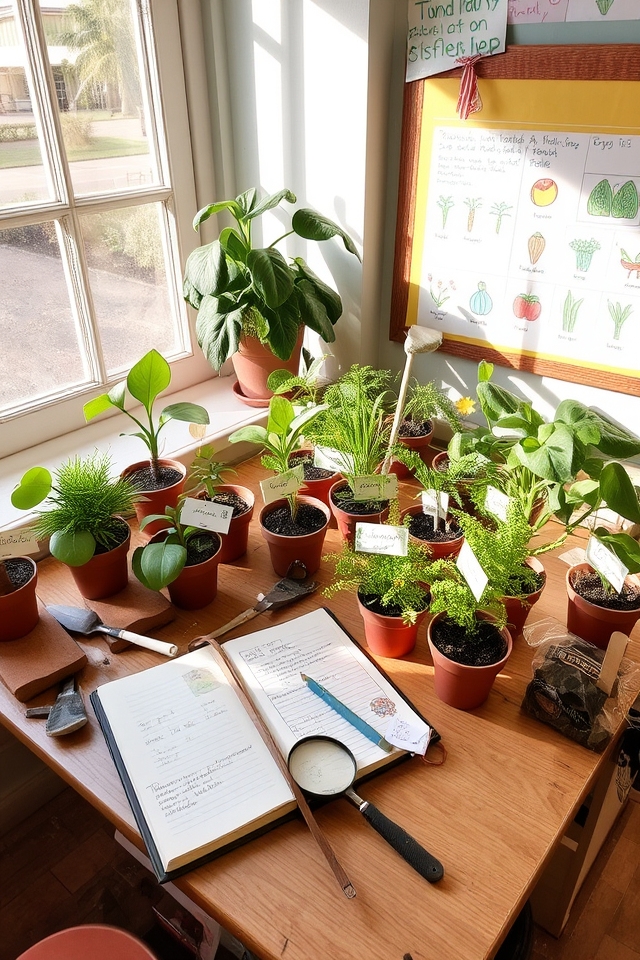
A Plant Exploration Station is an engaging and interactive area in the classroom where students can discover the fascinating world of plants. This station can feature a variety of potted plants, each labeled with its name and care instructions. Students can explore different textures, colors, and sizes while learning about plant biology, growth processes, and ecosystems. Hands-on activities like potting plants, examining soil, or journaling their observations can enhance their understanding, making learning about nature both fun and educational.
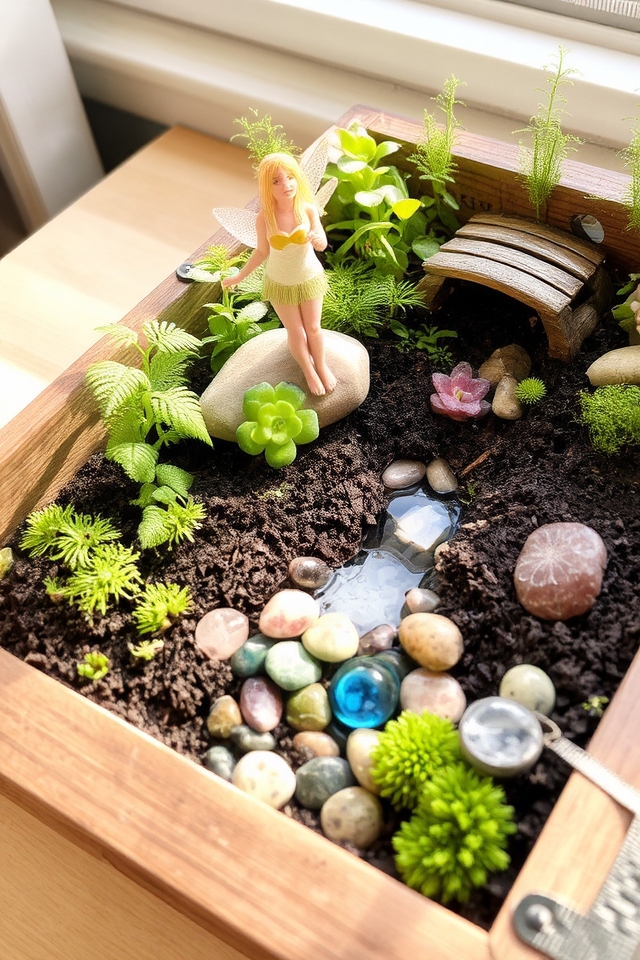
An indoor fairy garden can transform a classroom into a magical retreat for students. Using a shallow container filled with potting soil, teachers and students can create their whimsical landscapes featuring miniature plants, tiny fairies, and decorative stones. Incorporating natural elements like twigs and moss adds to the enchantment. This hands-on project encourages creativity, teamwork, and responsibility, as students learn to care for their tiny ecosystem, making it an enriching addition to any learning environment.
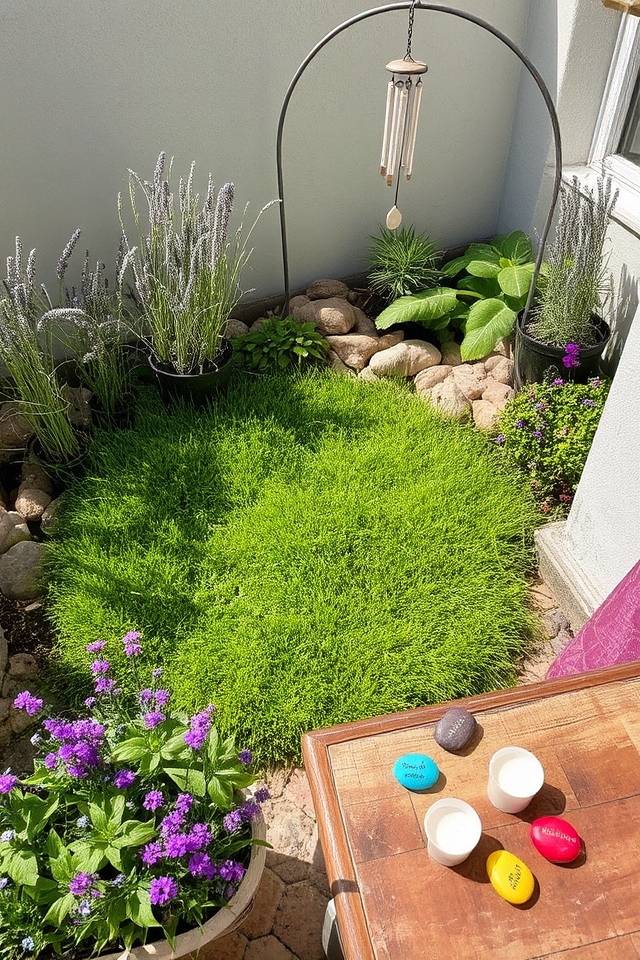
A Sensory Garden Corner in the classroom provides a unique, hands-on learning experience that engages students with various textures, scents, and colors. Incorporate plants like lavender and rosemary for their fragrant aromas, or choose herbs and soft grasses for tactile exploration. Adding elements such as wind chimes, pebbles, or water features can further stimulate the senses. This interactive space not only enhances students’ connection to nature but also promotes mindfulness and relaxation, making it a perfect retreat for young learners.
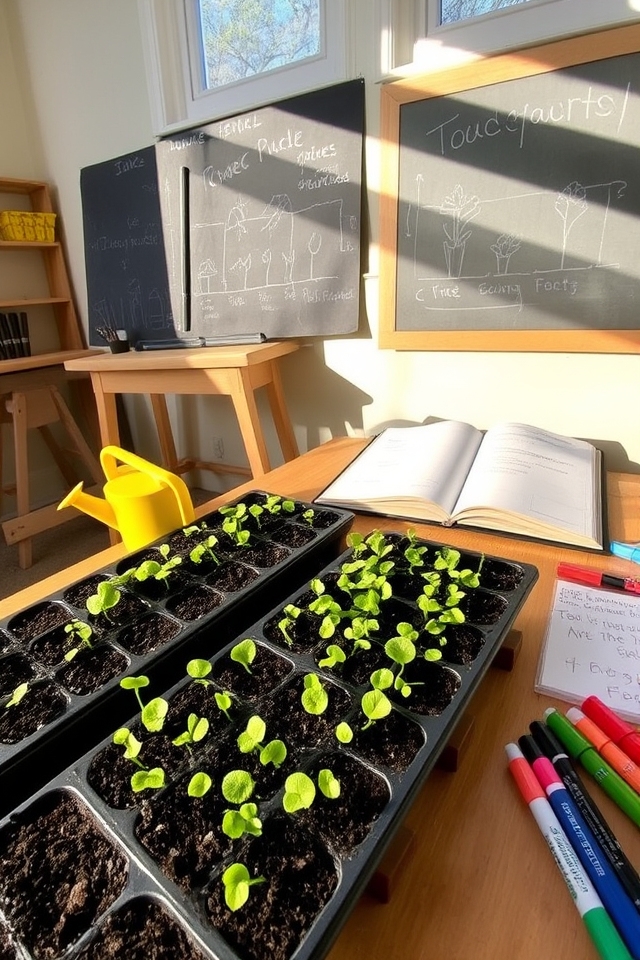
Creating a seed starting zone in the classroom can provide students with an engaging way to learn about the life cycle of plants. Designate a dedicated space with grow lights, seed trays, and soil, allowing students to plant seeds and observe their growth. Incorporate lessons on plant anatomy and environmental conditions while encouraging students to track progress in a garden journal. This hands-on experience fosters a sense of responsibility and wonder for nature.
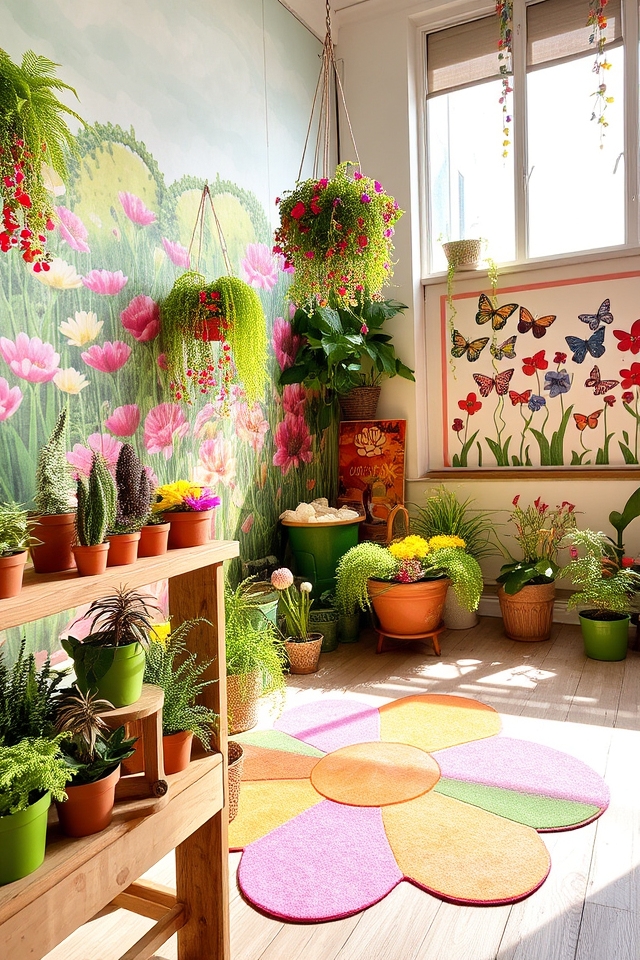
Transforming your classroom with garden-themed decor can create an inspiring learning environment. Use vibrant floral wall murals, potted plants, and nature-inspired bulletin boards to bring the outdoors inside. Include hanging planters and window boxes filled with faux flowers for a whimsical touch. Incorporate garden-themed educational tools, like plant posters or seedling charts, to foster curiosity about nature. This decor not only beautifies the classroom but also encourages creativity and a love for the environment among students.
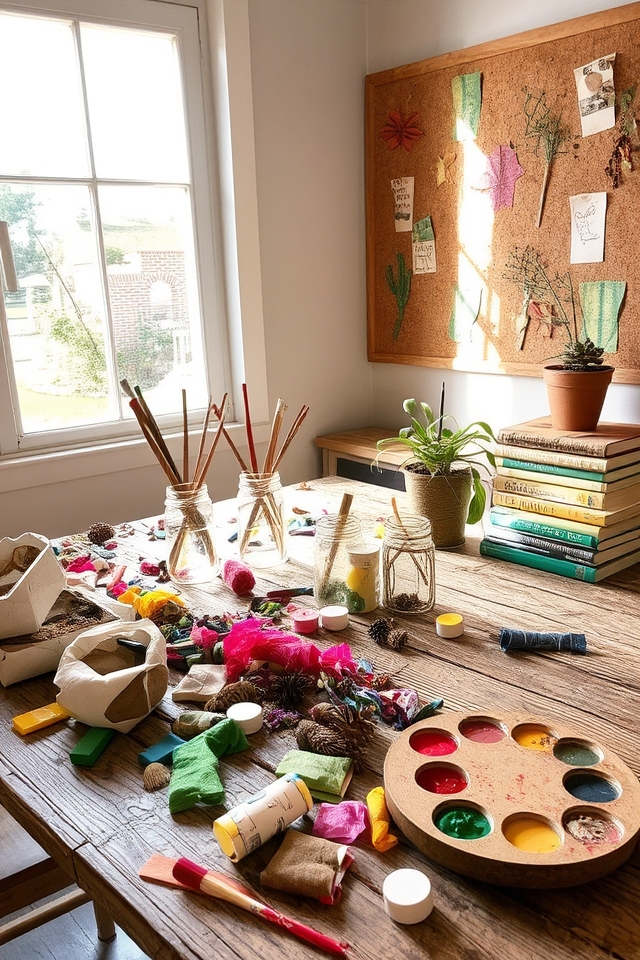
An eco-friendly craft station in the classroom is a fantastic way to promote sustainability while sparking creativity. This space can be filled with recycled materials, such as old newspapers, cardboard, and fabric scraps, allowing students to create imaginative projects without generating waste. Incorporating natural elements, like pressed flowers and leaves, enhances the experience and raises awareness about environmental conservation. By making crafts from eco-friendly supplies, students learn to appreciate nature while developing their artistic skills.
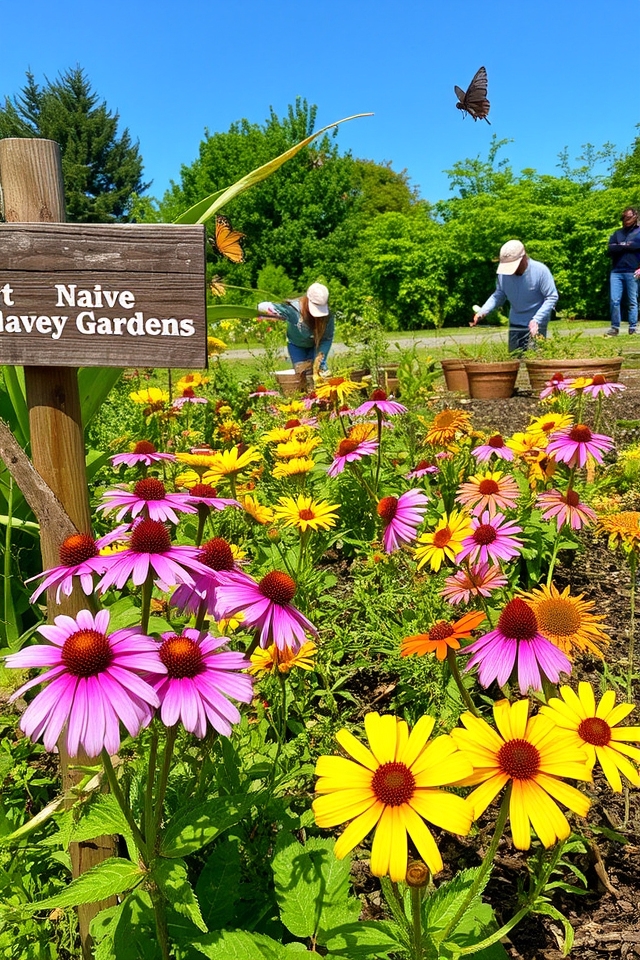
A Pollinator Garden Project is an engaging way to teach students about ecology and the significance of pollinators like bees, butterflies, and hummingbirds. By creating a vibrant garden filled with native plants that attract these essential species, students not only enhance their learning environment but also contribute to local biodiversity. This hands-on project promotes teamwork, responsibility, and a deeper appreciation for nature, allowing students to observe firsthand the critical role pollinators play in our ecosystems.
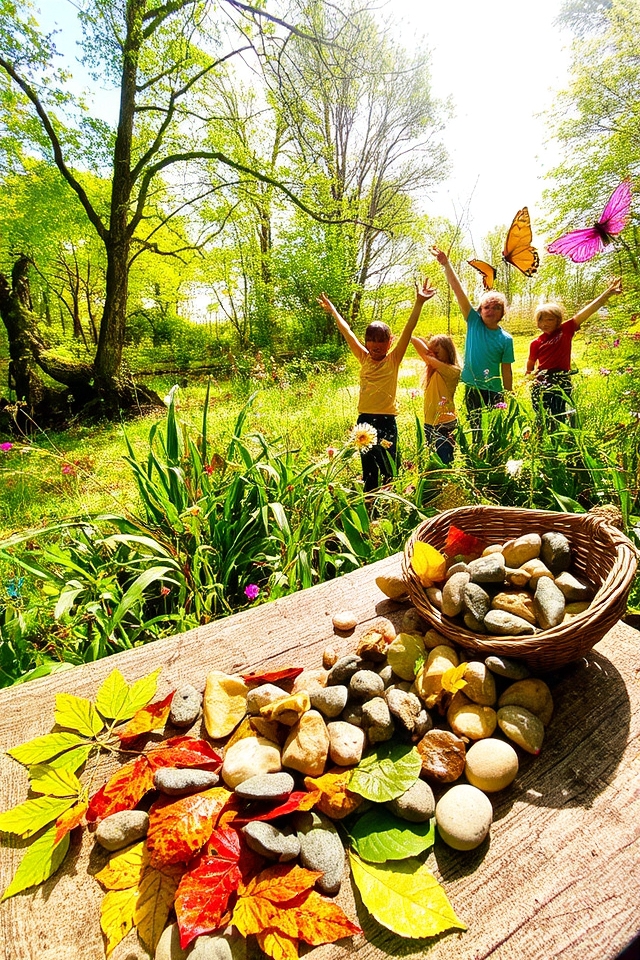
A Nature Scavenger Hunt is a fun and engaging way to connect students with their outdoor classroom. Teachers can create a list of natural items for students to find, such as specific leaves, rocks, insects, or flowers. This hands-on activity encourages teamwork, observation skills, and a deeper appreciation for nature. Students can work individually or in groups, taking photos or collecting items to showcase their findings. It’s an enriching experience that fosters curiosity and exploration.
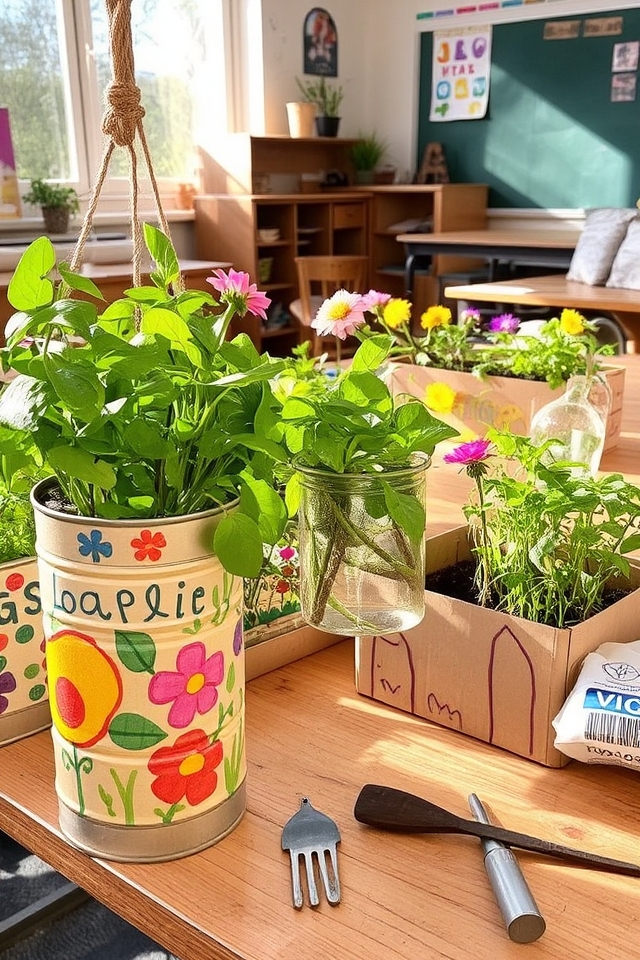
Recycled planter projects are a fantastic way to integrate sustainability and creativity in the classroom garden. Students can repurpose items like old bottles, tin cans, and cardboard boxes into unique planters, instilling a sense of environmental responsibility. Not only do these projects encourage hands-on learning and teamwork, but they also provide an engaging way for students to explore plant biology. Plus, each planter can showcase the individual creativity of the students, making the garden a vibrant learning space.
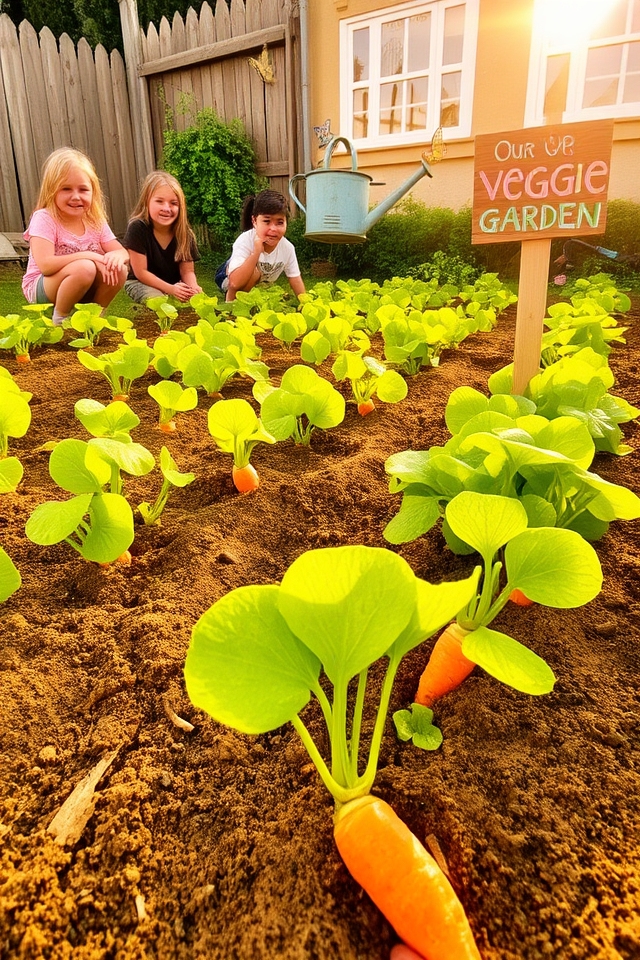
A classroom vegetable patch can transform an ordinary space into an interactive learning environment. This hands-on project encourages students to get involved in gardening, teaching them about plant growth, nutrition, and sustainability. By cultivating their own vegetables, students can observe the life cycle of plants and understand the importance of healthy eating. A vegetable patch also fosters teamwork, as students collaborate to sow seeds, tend to the plants, and eventually harvest their crops, making the learning experience both fun and rewarding.
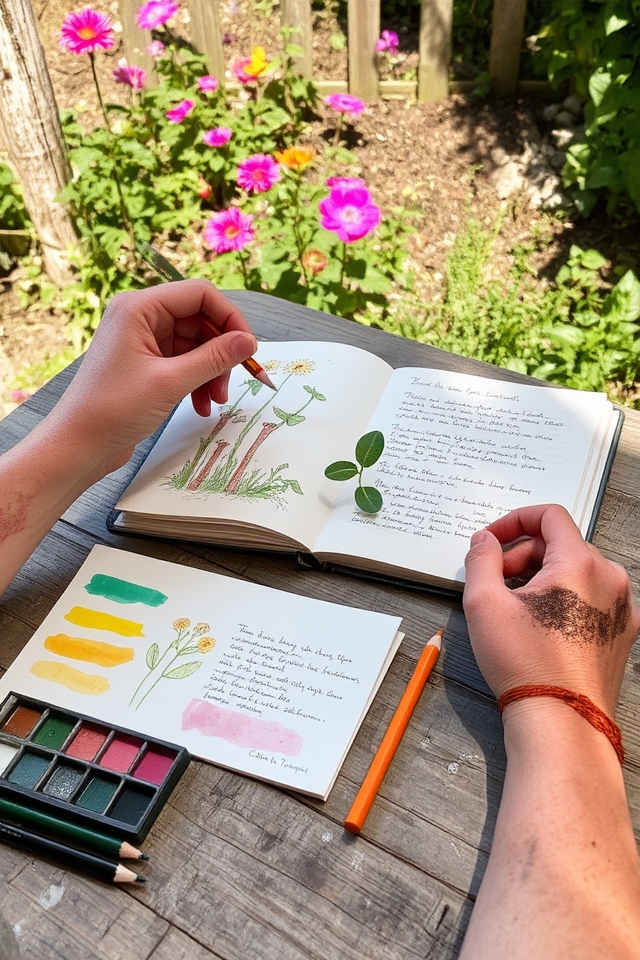
Garden journals are an engaging way for students to document their gardening experiences and observations. These journals can include sketches, photographs, and written reflections on the growth of plants, weather patterns, and their personal feelings about nature. Encouraging students to record their gardening journey not only enhances their observational skills but also fosters a deeper connection with the environment. Garden journals can become a cherished keepsake, promoting creativity and critical thinking in the classroom.
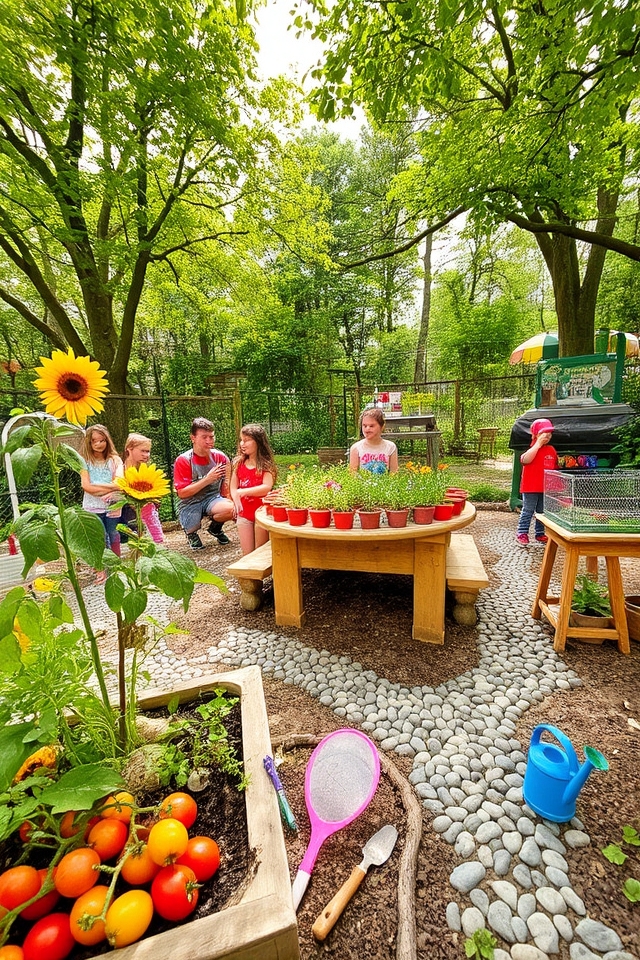
Creating an outdoor learning space in the classroom allows students to engage with nature while enhancing their observational and hands-on learning experiences. Incorporating elements like a vegetable garden, flower beds, and sensory pathways can stimulate curiosity and provide opportunities for environmental education. Outdoor classrooms encourage cooperative play and teamwork, promoting social skills alongside academic growth. By integrating nature into learning, students develop a deeper appreciation for the environment and its importance to their education.
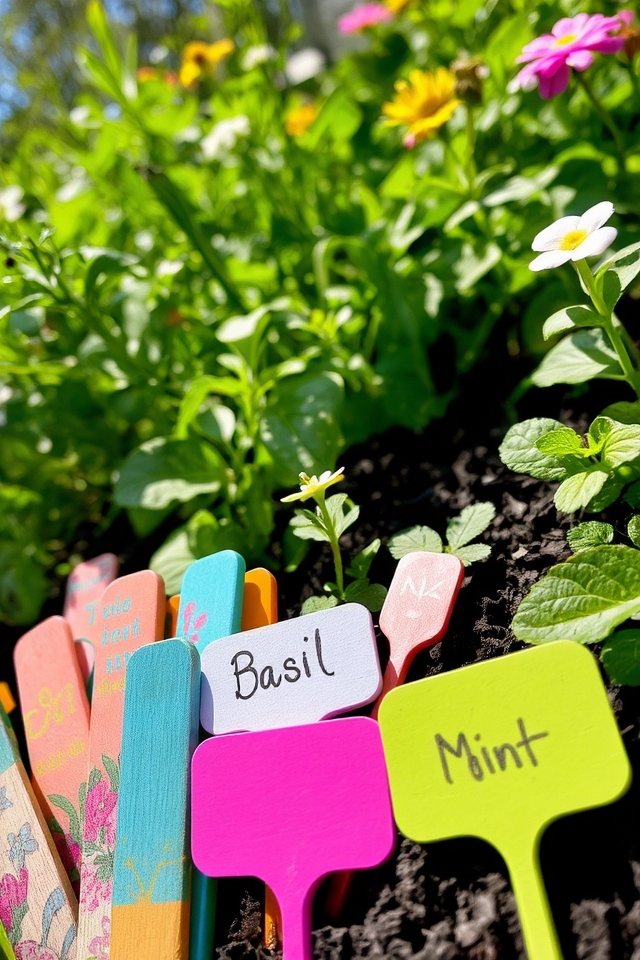
Colorful plant labels are a fantastic way to bring vibrancy and organization to classroom gardens. Made from various materials like wood, plastic, or paper, these labels can be painted or decorated with markers to match different plants. Not only do they help students identify the plants they’re caring for, but they also add a fun, artistic element to the garden space. Incorporating labels with creative designs encourages students to learn while engaging with nature.
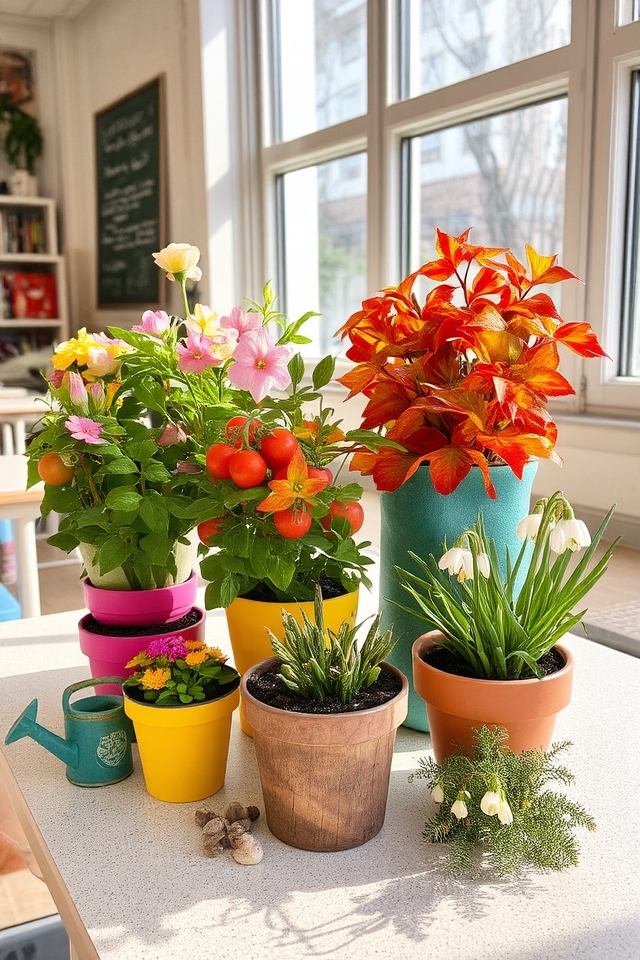
Seasonal garden displays in classrooms can enhance learning and creativity by showcasing the beauty of nature throughout the year. Incorporating plants that bloom in different seasons allows students to observe life cycles and the changing environment firsthand. Consider using containers for easy mobility, featuring themes like spring flowers, summer vegetables, autumn leaves, or winter greenery. These displays not only beautify the classroom but also provide a hands-on learning experience about ecology, responsibility, and the importance of caring for living things.
By integrating these delightful garden ideas into your classroom, you’re not just creating a vibrant learning space; you’re cultivating a wonderland of exploration and discovery. Each green corner invites curiosity and teamwork, nurturing students’ connection to nature and each other. So, roll up your sleeves and let the sprouting creativity bloom! With these inspiring projects, you’ll watch as your classroom transforms into a sanctuary where learning flourishes and imaginations take root. Let’s grow together!

Don't let aphids, slugs, and caterpillars ruin another plant. Take back control with simple, natural methods that actually work.